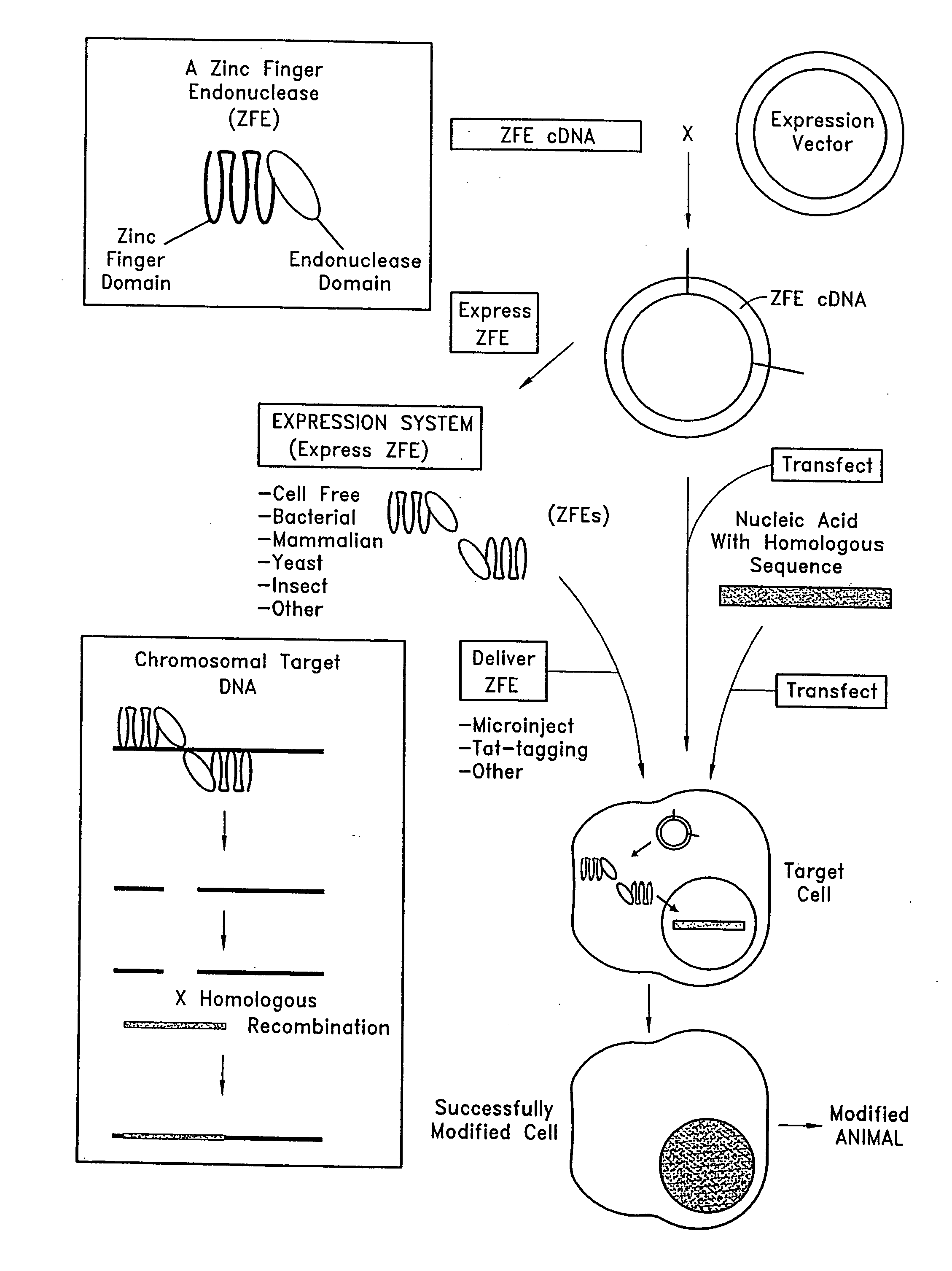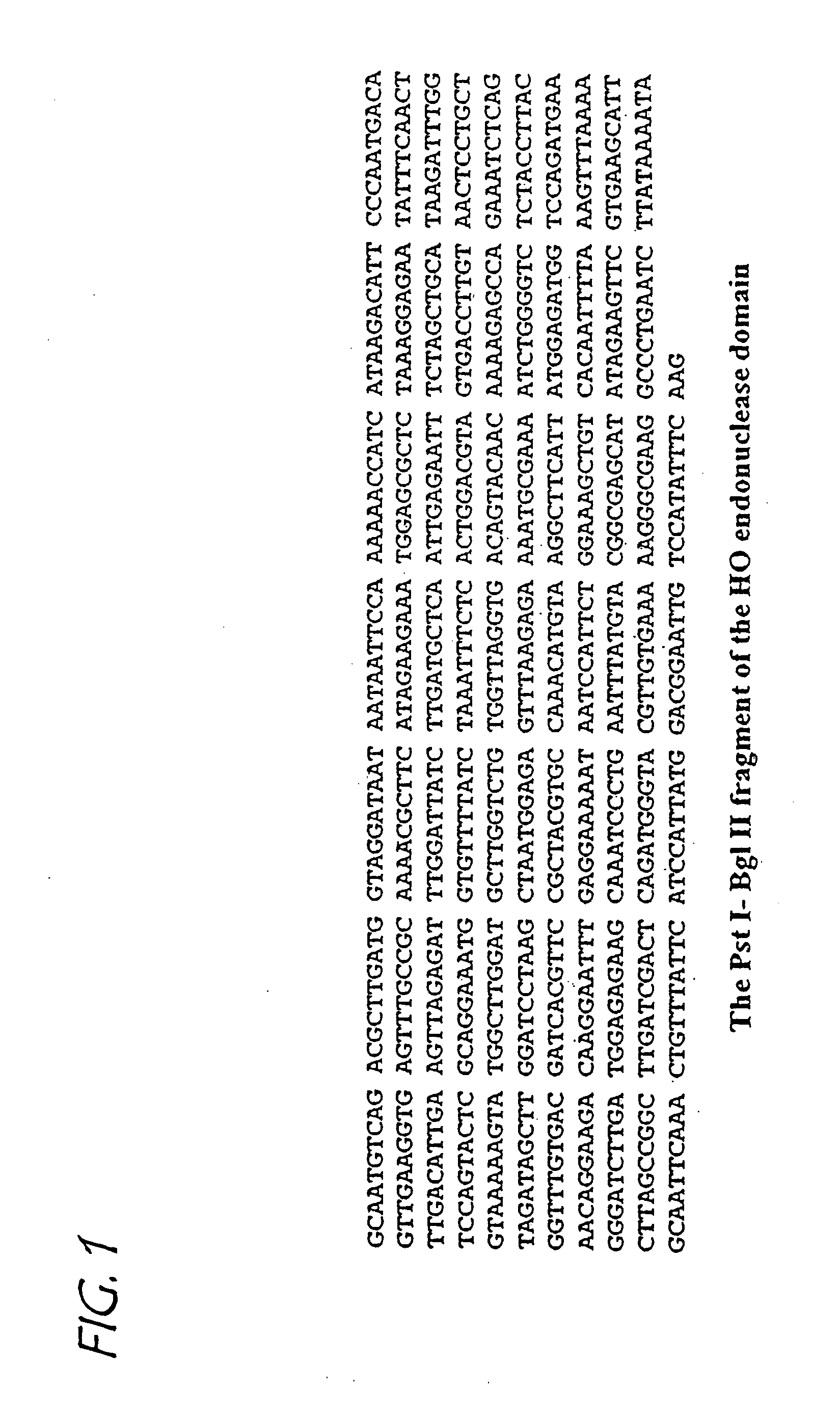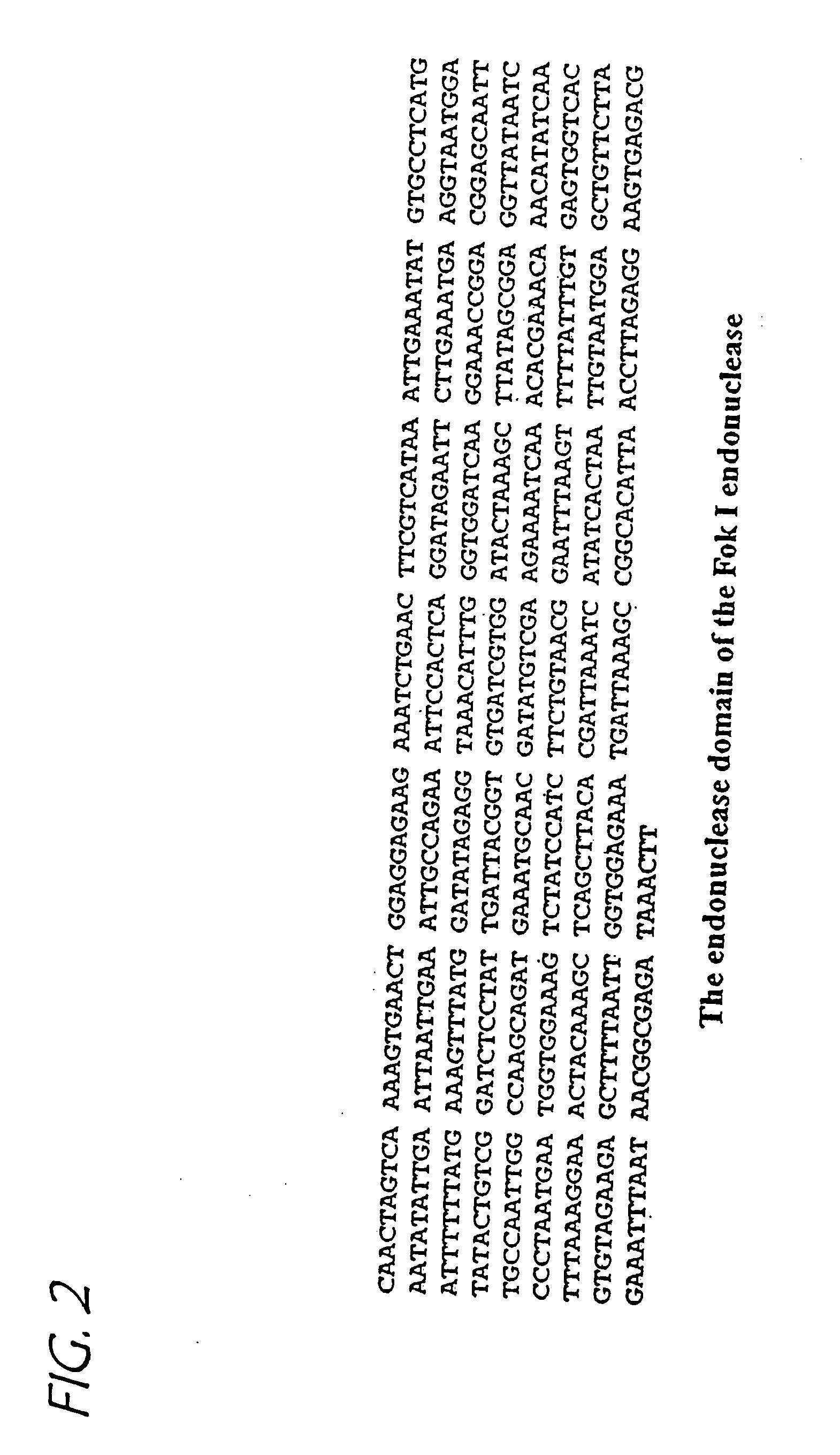Methods and compositions for using zinc finger endonucleases to enhance homologous recombination
a technology of endonucleases and zinc finger endonucleases, which is applied in the field of methods and compositions for enhancing homologous recombination by using zinc finger endonucleases, can solve the problems of difficult homologous recombination in animals without es cells, inefficient transgenic mice or genetically modified mice, and high cos
- Summary
- Abstract
- Description
- Claims
- Application Information
AI Technical Summary
Problems solved by technology
Method used
Image
Examples
example 1
Design of a Zinc Finger Endonuclease
[0071]A ZFE is designed with an endonuclease domain that cuts DNA and a zinc finger domain which recognizes the specific DNA sequence “GTGGCAGCC” (SEQ ID NO: 12). The zinc finger domains encoded by the sequence illustrated in FIG. 4 are fused to the Fok I endonuclease.
[0072]A standard PCR protocol is performed using the primers illustrated in FIG. 5 in order to make and amplify the zinc finger domain encoded by the sequence in FIG. 4. The Fok I sequence illustrated in FIG. 2 is amplified using standard PCR methods. The amplified zinc finger domain sequence is joined to the amplified Fok I construct thereby forming a chimeric DNA sequence.
example 2
Design of 6-MER Endonuclease Domain
[0073]The zinc finger coding domains of FIG. 4 are cut using the restriction sites Age I and Xma I. The two three-finger coding domains are joined to form a six-finger coding domain with the same consensus linker (TGEKP; SEQ ID NO: 13) between all fingers. This six finger framework is linked to the HO endonuclease domain illustrated in FIG. 1.
example 3
Design of a Sequence Specific ZFE
[0074]A target endogenous chromosomal nucleotide sequence at or near which it is desired to enhance the frequency of homologous recombination is identified and scanned to identify a sequence which will be bound by a zinc finger protein comprising 6 zinc finger domains. If ‘N’ is any base pair, then the zinc fingers are selected to bind to the following sequence within the target nucleic acid: 5′-G / A N N G / A N N G / A N N G / A N N G / A N N G / A N N-3′ (SEQ ID NO: 11), where N is A, G, C or T.
PUM
| Property | Measurement | Unit |
|---|---|---|
| concentration | aaaaa | aaaaa |
| pH | aaaaa | aaaaa |
| frequency | aaaaa | aaaaa |
Abstract
Description
Claims
Application Information
 Login to View More
Login to View More - R&D
- Intellectual Property
- Life Sciences
- Materials
- Tech Scout
- Unparalleled Data Quality
- Higher Quality Content
- 60% Fewer Hallucinations
Browse by: Latest US Patents, China's latest patents, Technical Efficacy Thesaurus, Application Domain, Technology Topic, Popular Technical Reports.
© 2025 PatSnap. All rights reserved.Legal|Privacy policy|Modern Slavery Act Transparency Statement|Sitemap|About US| Contact US: help@patsnap.com



